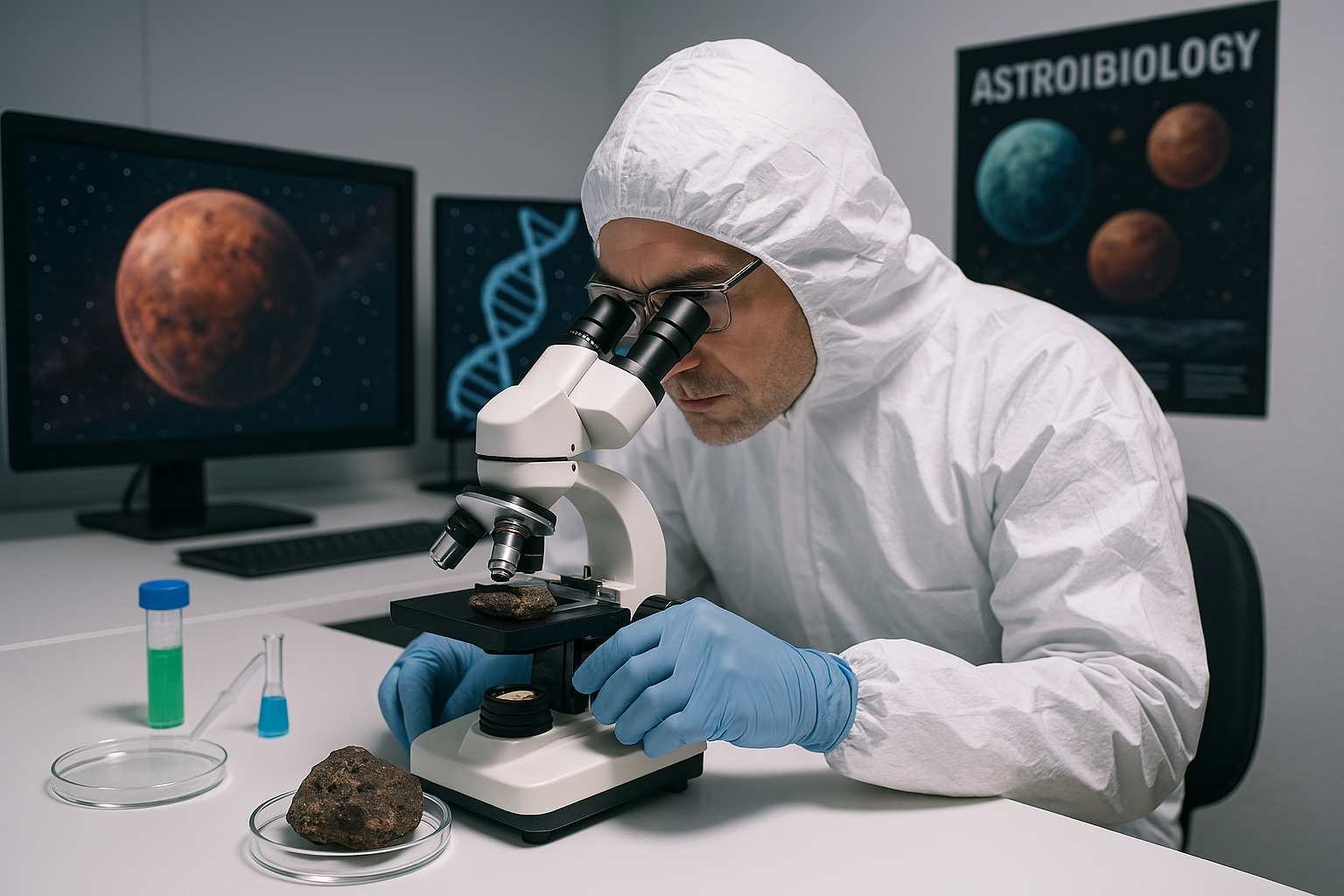On May 7, 2025, a groundbreaking discovery in quantum physics made headlines: physicists successfully observed individual “free-range” atoms interacting in space for the first time, confirming a quantum mechanical theory proposed over a century ago. This milestone, detailed in a recent article by Live Science, not only validates foundational principles of quantum mechanics but also opens new avenues for exploring the subatomic world. Let’s dive into the significance of this achievement, the science behind it, and its potential implications for future research and technology.
A Century-Old Prediction Comes to Life
The theory in question dates back to 1924, when French physicist Louis de Broglie proposed that particles, such as atoms, could exhibit wave-like behavior. Known as the “de Broglie wave” hypothesis, this idea suggested that particles like bosons—subatomic particles that share quantum states—would behave as waves, bunching together in a coherent manner. While this concept became a cornerstone of quantum mechanics, directly observing such behavior in individual atoms remained elusive due to the inherent challenges of quantum observation. Quantum mechanics dictates that certain properties, like an atom’s position and velocity, cannot be precisely known at the same time—a phenomenon often referred to as quantum weirdness.
For decades, scientists could only observe atoms in controlled environments, such as tightly bound traps or lattices, where their interactions were constrained. However, the de Broglie wave theory specifically applied to “free-range” atoms—those floating freely in space without external confinement. Observing such atoms required a breakthrough in experimental techniques, and that’s exactly what a team of physicists, led by Martin Zwierlein at MIT, achieved.
The Experiment: Freezing Atoms in Time
The team employed a novel technique called “atom-resolved microscopy” to capture images of these free-range atoms. The process began with a cloud of sodium atoms, cooled to ultracold temperatures to minimize thermal motion. These atoms, classified as bosons, were held in a loose trap to allow for free movement. The researchers then used a lattice of laser light to temporarily “freeze” the atoms in place, akin to hitting pause on their motion. A second, fluorescent laser illuminated the atoms, revealing their positions with unprecedented clarity.
What they observed was remarkable: the sodium atoms exhibited wave-like behavior, bunching together as predicted by de Broglie. This direct observation confirmed that even in free space, bosons could synchronize their quantum states, behaving collectively as a wave. Zwierlein described the images as “beautiful,” noting that they allowed the team to see “single atoms in these interesting clouds of atoms and what they are doing in relation to each other.” This marked the first time such interactions were directly witnessed, bridging a century-long gap between theory and experimental evidence.
Why This Matters: The Foundations of Quantum Mechanics
Quantum mechanics, developed in the early 20th century, revolutionized our understanding of the universe at its smallest scales. Unlike classical physics, which governs the macroscopic world with predictable laws, quantum mechanics describes a realm of probabilities, wave-particle duality, and entanglement. The de Broglie wave hypothesis was a pivotal piece of this puzzle, laying the groundwork for later developments like the Schrödinger equation, which mathematically describes how quantum systems evolve over time.
However, confirming such theories experimentally is crucial. Quantum mechanics often defies intuition—concepts like superposition (where particles exist in multiple states simultaneously) and entanglement (where particles are instantaneously linked across vast distances) challenge our everyday understanding of reality. Direct observations, like the one achieved by Zwierlein’s team, provide concrete evidence that these counterintuitive principles are not just theoretical constructs but real phenomena governing the subatomic world.
This discovery also underscores the power of quantum mechanics to describe systems that classical physics cannot. For instance, classical mechanics fails to explain phenomena like the stability of atoms or the behavior of electrons in materials. By confirming de Broglie’s prediction, the experiment reinforces the validity of quantum mechanics as the most accurate framework for understanding the microscopic universe.
The Challenges of Observing Free-Range Atoms
Observing individual atoms in free space is no small feat. Atoms are notoriously difficult to track due to their quantum nature. The Heisenberg Uncertainty Principle, a fundamental tenet of quantum mechanics, states that measuring one property of a particle, such as its position, inherently disturbs another, like its velocity. This makes pinpointing an atom’s exact location and behavior a complex task.
Previous experiments often relied on trapping atoms in optical lattices or other confining structures, which allowed researchers to study their interactions under controlled conditions. However, these setups didn’t fully replicate the “free-range” scenario described by de Broglie, where atoms move and interact without external constraints. The atom-resolved microscopy technique developed by Zwierlein’s team overcomes this limitation, offering a window into the natural behavior of atoms in free space.
The use of ultracold temperatures was also critical. At such low temperatures, thermal noise—random atomic motion caused by heat—is minimized, allowing the quantum effects to become more pronounced. The sodium atoms, cooled to near absolute zero, could exhibit their wave-like properties without interference from external factors, making the de Broglie wave behavior observable.
Implications for Quantum Research
The successful observation of free-range atoms has far-reaching implications for quantum physics. One immediate application is the potential to explore other quantum mechanical phenomena with greater precision. The Live Science article notes that Zwierlein’s team plans to use atom-resolved microscopy to investigate the “quantum Hall effect,” a phenomenon where electrons synchronize their motion under a strong magnetic field. This effect is crucial for understanding quantum states in materials and could lead to advancements in quantum computing and condensed matter physics.
Moreover, this technique could shed light on other unresolved questions in quantum mechanics. For example, researchers have long sought to reconcile quantum mechanics with general relativity, Einstein’s theory of gravity. While gravity is negligible at the atomic scale, a unified “theory of everything” remains a holy grail in physics. By providing a clearer picture of quantum behavior in free space, this experiment could contribute to efforts to bridge these two frameworks, potentially revealing new insights into the nature of the universe.
The discovery also has parallels with other recent advancements in quantum physics. For instance, in April 2025, ScienceDaily reported on the observation of a superradiant phase transition, another quantum phenomenon predicted decades ago. These breakthroughs highlight the rapid progress in experimental quantum physics, driven by innovations in technology and methodology.
Potential Technological Applications
Beyond its theoretical significance, the ability to observe free-range atoms could pave the way for practical applications. Quantum mechanics underpins many modern technologies, from lasers and transistors to emerging fields like quantum computing and cryptography. By deepening our understanding of atomic interactions, this discovery could lead to more precise quantum sensors, capable of detecting minute changes in magnetic or gravitational fields.
Such sensors could have applications in diverse areas, from medical imaging to navigation. For example, ultra-sensitive magnetic field detectors, as mentioned in a 2020 Live Science article on quantum entanglement, could revolutionize neuroscience by mapping brain activity with unprecedented detail. Similarly, improved gravitational sensors could enhance our ability to detect underground resources or monitor tectonic activity, contributing to fields like geophysics and environmental science.
Quantum computing, a field that leverages quantum principles to perform calculations exponentially faster than classical computers, could also benefit. Understanding how atoms behave in free space might inform the development of more stable quantum bits (qubits), which are prone to errors caused by environmental noise. While quantum computers are still in their infancy, advancements like this bring us closer to realizing their full potential.
A Step Toward Understanding the Quantum Universe
This breakthrough is a testament to the enduring relevance of quantum mechanics, a field that continues to challenge our perceptions of reality. By confirming a century-old theory, Zwierlein’s team has not only validated the foundational work of pioneers like Louis de Broglie but also opened new doors for exploration. The ability to observe free-range atoms in action brings us closer to unraveling the mysteries of the quantum world, from the behavior of subatomic particles to the fundamental forces that govern the universe.
As quantum research progresses, we can expect more discoveries that bridge the gap between theory and experiment. Each step forward not only enhances our understanding of the microscopic world but also paves the way for technologies that could transform our lives. For now, the observation of free-range atoms stands as a remarkable achievement, reminding us of the beauty and complexity of the quantum realm—and the ingenuity of those who seek to understand it.



